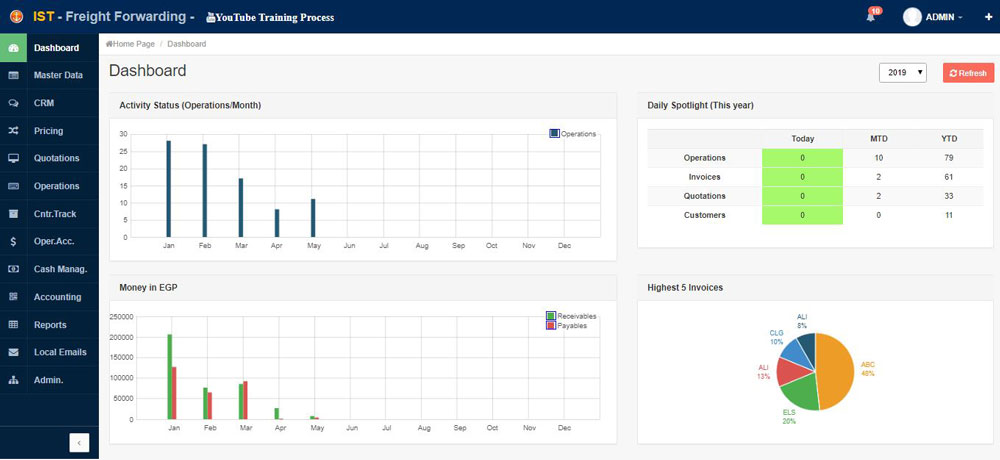The 21st century has been characterized by rapid digital transformation, impacting every facet of business operations worldwide. In the freight forwarding industry, the emergence of freight forwarding software, systems, and solutions heralded a new era of efficiency and cost-effectiveness. Leveraging these digital tools can drastically improve performance, offering a competitive edge in a market that demands agility, responsiveness, and a high degree of coordination.
Understanding Freight Forwarding Software and Systems
Before delving into how freight forwarding can be optimized, it is crucial to understand what freight forwarding software and systems entail. These platforms are comprehensive tools that manage and coordinate complex logistics operations. They encompass functions such as shipment tracking, document management, inventory control, transport management, and more, all aimed at enhancing efficiency and reducing costs.
A typical freight forwarder software may also integrate with other systems like customer relationship management (CRM), enterprise resource planning (ERP), or supply chain management (SCM) platforms, providing a complete suite of solutions for managing every aspect of freight operations.
The Path to Digitization: Freight Forwarding Solutions
Transitioning from traditional methods to a digital freight forwarding system can be a challenging task, but the benefits far outweigh the initial cost and learning curve. Here are some significant benefits and the path to achieving them:
Efficiency: Digital freight forwarding solutions offer automation, eliminating repetitive manual tasks and reducing human error. This leads to quicker operations and a higher degree of accuracy in tasks such as order processing, document management, and inventory tracking.
Real-time tracking: A vital aspect of digital freight forwarding systems is the ability to track and monitor shipments in real-time. This provides businesses with increased visibility into their supply chains, enabling them to make informed decisions, manage risks, and maintain better control over their operations.
Cost-effectiveness: Through automated operations, real-time tracking, and data-driven decision-making, freight forwarder software can significantly cut down operational costs. Moreover, it can identify and mitigate potential financial risks, ensure compliance, and reduce fines and penalties.
Data-driven insights: Digital platforms generate a vast amount of valuable data. By employing advanced analytics, freight forwarding software can yield crucial business insights, aiding strategic planning, and fostering competitive advantage.
The Roadmap to a Digital Freight Forwarding Process
The journey to a digital, efficient, and cost-effective freight forwarding process involves several key steps:
Identify your needs: Before selecting freight forwarding software, it is essential to understand your specific operational requirements. Identifying your needs will help you choose a solution that best fits your business model.
Evaluate and Select: There are numerous freight forwarding systems available in the market, each with different features and functionalities. Evaluate the options based on their features, compatibility with existing systems, scalability, vendor support, and cost.
Implementation and Training: Once the software is selected, plan for its implementation. Ensure your team is well-trained and comfortable using the new system. This step can significantly impact the success of the transition.
Continuous Improvement: Post-implementation, it is vital to continually assess the system’s performance and make necessary adjustments for optimization. Regular updates and maintenance are also crucial to ensure the system remains efficient and up-to-date.
The integration of freight forwarding software into logistics operations is a strategic move toward digital transformation. By leveraging these innovative freight forwarding solutions, businesses can create a more streamlined, efficient, and cost-effective freight forwarding process. Ultimately, the key to success lies in selecting the right software that aligns with your business needs, effectively implementing it, and embracing a culture of continuous learning and improvement.
While embracing digitization in the freight forwarding process represents a significant shift, it’s a necessary change in an increasingly digital and global economy. The advantages of using freight forwarding software – from cost savings to operational efficiency and real-time tracking – are far too substantial to overlook. Remember, the digital revolution is not just about technology, but about people and processes too. As you navigate this journey, consider your employees’ needs and engage them in the transformation process. Foster an environment of learning and adaptation to make the most of your chosen software solution. By harnessing the power of technology, you can empower your team, satisfy your customers, and thrive in the dynamic world of freight forwarding.


